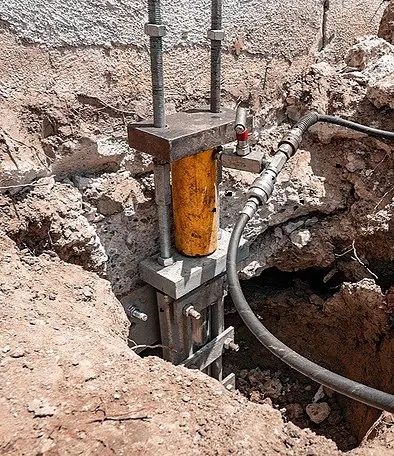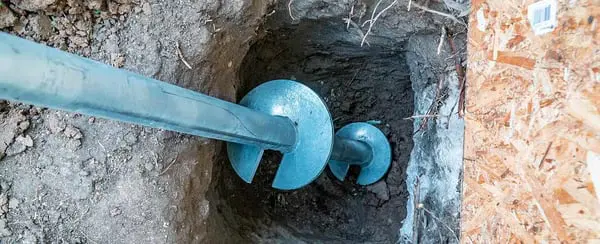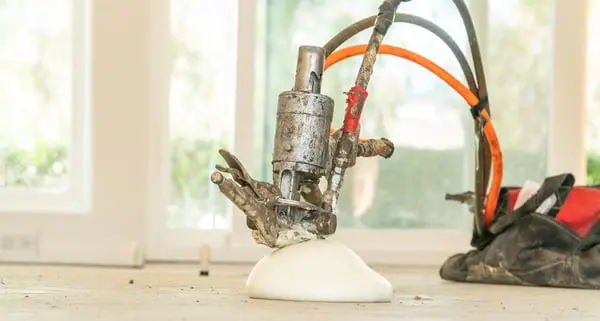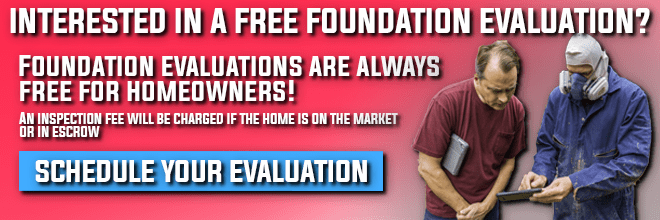The question of how long does foundation repair last is directly derived from the root query is foundation repair worth it?
In other words, is foundation repair worth the time & money, and will it stand the test of time?
That’s what we do here at Dalinghaus – we go deeper, to the root of the problem, discover the question behind the question.
In short, foundation repair is worth it because:
- Foundation damage can hurt your home resale value by 20% – see Sell Your Home with Foundation Issues
- You will finally be able to remodel once and for all (and a litany of other benefits) – see 5 Reasons to Fix Your Foundation Now
- Your foundation repair will stand the test of time (and, our Dalinghaus lifetime warranty on all steel pier systems is transferable upon inheritance or home resale)
In this article, we are going to go over our primary forms of underpinning and how long they last as individual/independent systems and together as a whole – push piers, helical piers, and polyurethane.
This article is going to help demonstrate to you that foundation repair, in fact, is completely worth the price tag due to longevity alone.

How Long Do Push Piers Last?
Push piers are sturdy and a relatively indestructible means of underpinning. The push piers we utilize are galvanized to protect against corrosion and rust.
It’s estimated that push piers can last over 150 years and/or the lifetime of the structure.
What is a Push Pier? A Push Pier is a steel pipe utilized in foundation repair that is hydraulically driven into competent, load-bearing soil and anchored to a foundation’s prepped footing via a remedial bracket to secure, stabilize and/or lift the structure. Push Piers are:
|
With push piers costing anywhere between $2,100 to $2,500 per pier, for over 150 years of support, it’s well worth it.

How Long Do Helical Piers Last
Helical Piers are durable and just might be dug up with dinosaur bones in the future. The helical piers we utilize are galvanized to protect against corrosion and rust.
It’s estimated that push piers can last over 150 years and/or the lifetime of the structure.
What is a Helical Pier? A Helical Pier is a steel circular/square pipe (utilized in foundation repair) that is hydraulically driven to competent, load-bearing soil and anchored to a structure’s prepped footing via a remedial bracket to secure, stabilize and/or lift a structure. Helical Piers are:
|
Helical piers cost anywhere between $2,200 to $3,000 per pier. That’s not too bad for superhero piers that can withstand 74,000 pounds of pressure.

How Long Does Polyurethane Last?
Polyurethane can lift slabs on its own but is often used to void fill after a foundation lift to maximum practical recovery.
Polyurethane, by some estimates, can last indefinitely. However, on projects other than void fill following a lift, the ground beneath polyurethane may shift and sink, resulting in a need for a refill years down the line.
*Note – Polyurethane void fill after a lift is only utilized on parts of the home that require a void fill, saving you money in the long run.
What is Polyurethane Foam?Polyurethane foam is an injectable polyol and isocyanate resin sealant, insulation, grout which expands upon application providing void fill, structural support, and re-leveling properties. Polyurethane foam is waterproof, flame-retardant, noninvasive, and nonpolluting, weighing 3.5 to 5 pounds per cubic foot and reaching 90% compression strength after 15 minutes. Polyurethane can hold 7,200 pounds per square foot. |
The average price of polyurethane in Southern California and Arizona is $10 per square foot/per pound.
Here at Dalinghaus Construction Inc., our polyurethane minimum is $2,500 with our standard job averaging out to $2,500-$5,000.
How Long Does Dalinghaus Construction Repair Last?
As mentioned in other articles, we often use these three primary forms of underpinning in tandem. Push piers, helical piers, and polyurethane work magic together.
In conclusion – the foundation repair will last as long as the structure, over 150 years – well beyond your lifetime.
Now, the more important question is: is this covered by a warranty? Because, if for some reason push comes to shove, you’d like to know you’re covered. The answer is Dalinghaus foundation repair is absolutely covered by our lifetime warranty.
So, now we’ve come full circle. The question of how long does foundation repair last is directly derived from the root query is foundation repair worth it which is directly concerned with foundation repair cost.
Is the bang worth the buck?
We have several articles on foundation repair cost –
- Foundation Repair Cost
- Foundation Repair Cost Comparison – Tips and Tricks
In short – we believe foundation repair is always worth it.
Choose Dalinghaus for All of Your Foundation Needs
Dalinghaus Construction Inc. can help you fix your sinking foundation once and for all with helical pier, push pier, and polyurethane underpinning.
We do foundation underpinning the right way. With over 100 years of combined experience and 4.9 stars out of over 300 reviews – we are here to ensure that you never settle.
If you live in SoCal or Arizona and would like a FREE foundation inspection, click the link below –







